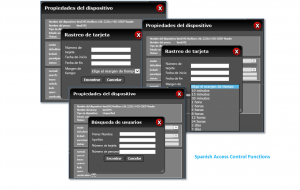When it comes to communicating during a crisis, timing is everything. The decisions an organization makes from when an incident starts to when law enforcement responds at the scene is crucial. That’s why it’s more important now than ever for organizations to lay the groundwork for an emergency plan that will enable intelligent decision-making if an incident occurs.
A key component of any emergency plan is effective communication and coordination – whether between different departments of a business or different agencies within a city or local government.
Converged Security and Information Management (CSIM) provides a central operations dashboard where decision makers can see their organization’s data in an intelligent way.
CSIM can interpret data from numerous data sources and send actionable insights to key decision-makers. This empowers organizations to minimize the amount of time it takes to sort through data, determine appropriate actions and respond.
Here are three ways that CSIM technology supports crisis communications:
Managing Data – CSIM technology brings together a common operating picture of all company and organizational asset data. Based on customized rules and regulations, organizations can set perimeters for what should be flagged as a “risk”. The first warning sign is usually unusual or unexpected activity, whether physically on your organization’s campus or virtually on your IT system. By collecting data from disparate sensors, devices, systems and subsystems, software tools are able to identify patterns that are unusual on any monitoring or sensor device.
Increasing Situational Awareness – Organizations can create a safer environment through the provision of a robust access control system. The more secure a building is, the longer it will take for an intruder to enter the premises. Building in safeguards such as fewer entry access points, gated access to different parts of a building, RFID and in some cases biometrics, are all steps that building managers and companies should consider.
It’s also important to take a look at your infrastructure – both physical and IT assets – and ensure that the data from these devices is communicating to a central hub to create a 360° picture.
Integrating Systems – CSIM pulls together the video data along with other information from access control systems, sensors, alarms, ID management, GIS, and other data sources to create a holistic sense of situational awareness and provide appropriate actions.
While security sensors and video footage alone can help secure an organization, businesses can leverage powerful technology to integrate their data and receive automated, intelligent information that eliminates the risk of human error and facilitates the security process – saving your organization money, time, and in some cases employee safety.
If you’re interested in learning more about what a CSIM system can do for your business, you can visit our Vidsys CSIM solution page here.






